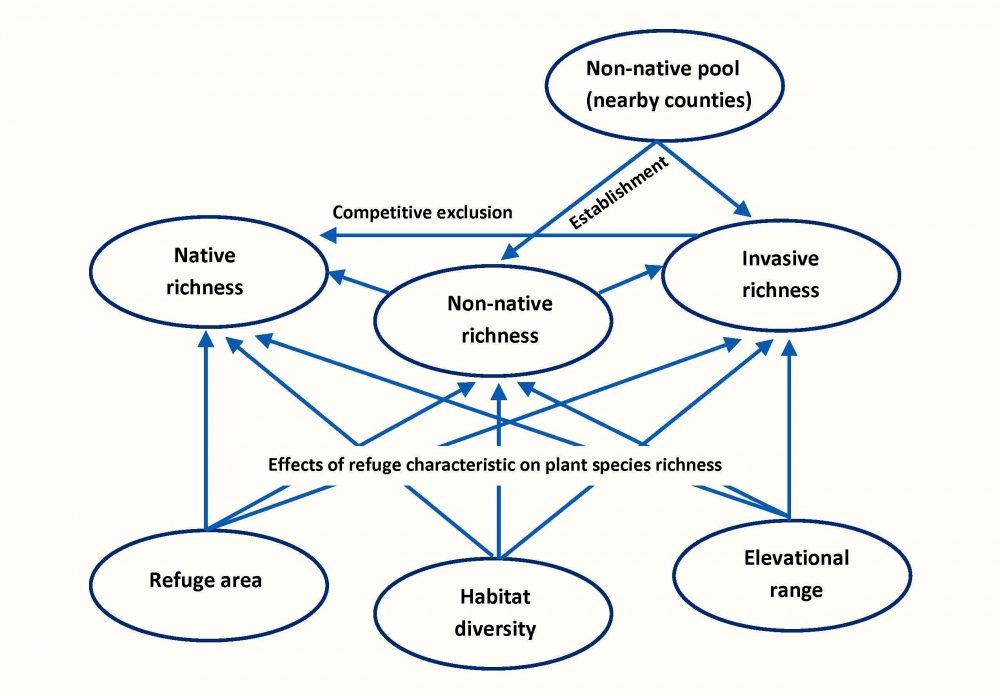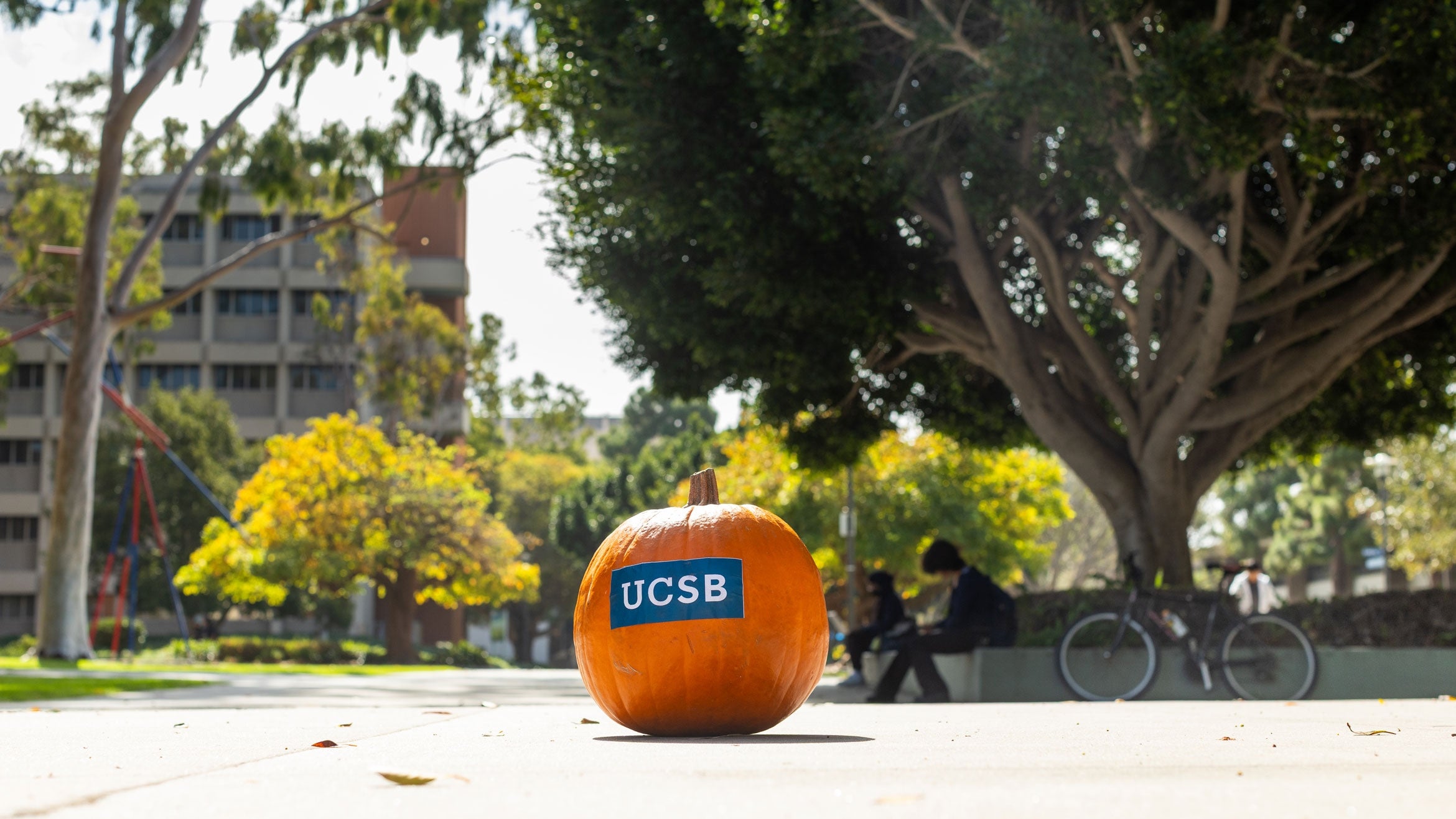
Undergraduates Gain Practical Science Research and Analysis Skills

It's not often that undergraduates get to participate in research let alone network, share strategies, and form collaborations with students at other institutions. But UC Santa Barbara's National Center for Ecological Analysis and Synthesis (NCEAS) facilitated just that with its first-ever undergraduate distributed seminar in April 2011. The seminar's results not only filled a hole in collective ecology knowledge, but also were published today in BioScience magazine.
Students used structural equation models to tease out the relationships between habitat heterogeneity, refuge area, the regional pool of non-native plants, and the richness of native, non-native, and invasive plants. The findings show that patterns in wildlife refuges are similar to those previously reported for unprotected areas: Native and non-native richness is positively related in mainland refuges (the "rich get richer" pattern), but negatively related on island refuges.
The project is a first in its use of a network of undergraduate ecology and conservation biology classes at eight universities across the country. Each class compiled data on invasive plants in U.S. National Wildlife Refuges (NWRs) in its region, including habitat richness and evenness, elevational range, native species diversity, refuge size, and the regional pool of invasive species. Representatives from each class brought their data to NCEAS, where they performed continental-scale analysis to understand how the aforementioned factors promote or inhibit invasive species.
"We believe there is great potential for the ecological community to benefit from partnerships like this that harness the underutilized power of undergraduate science classes to compile and analyze large public datasets," said David Marsh, former undergraduate education advisor at NCEAS and now a professor of biology at Washington and Lee University in Lexington, Virginia. "These sorts of projects also enhance the cause of science education by providing authentic research experiences for large numbers of students on big-picture environmental issues."
The distributed-seminar experimental teaching model originated at NCEAS, where, in 1997, graduate students from eight institutions first came together to analyze the science of different habitat-conservation plans and create a report. The combined effort made it possible to tackle data sets that would overwhelm a single student or even an individual lab.
"Collaboration and data-sharing across institutions is increasingly important in scientific research, but our traditional classroom structures can make it difficult for students to get a sense of how such distributed research actually works," said Stephanie Hampton, deputy director of NCEAS. "With these distributed seminars, the students get practical, guided experience working in a large collaboration and using a variety of data types –– not all of which were collected by the students themselves. It is a different way for students to see science done, and far more representative of modern research."
Before the efforts of the undergraduate distributed seminar, the data about invasive species across the country were scattered and surprisingly incomplete. The dataset that classes started with was based on a 2002 web survey distributed to managers at all NWRs. The first goal of the study was to fill in some of the holes by following up with refuge personnel and using online databases.
The second goal was to get a better understanding of the factors that determine whether or not NWRs have a lot of invasive species. Some refuges claim that only one or two invasive plants are problematic; others list upward of 30 problem species. Why are some reserves more affected than others? Does it depend on the size of the different refuges, the number of different habitats found there, the diversity of native plant species? Each class did a basic analysis to determine what factors explain the extent of plant invasions in their region.
Because the study focuses on protected areas, it also demonstrates that species of management concern (the small subset of problem invasives) tend to show patterns similar to those of non-natives in general. However, these patterns are highly variable among regions, suggesting that management strategies for invasive species are best formulated at the regional level.
"Our results will help refuge managers better understand the magnitude of current plant invasions and to anticipate future invasions of weedy plants," said Marsh. "We will also leave behind a more complete public database on invasive plants in protected areas."
"The distributed undergraduate seminar to study invasive species played an important role in my decision to pursue a career in the epidemiology of emerging infectious diseases," said Alberto Aparicio, who participated while attending San Francisco State University. "I am currently a fellow at the U.S. Centers for Disease Control and Prevention, and I plan to continue a graduate program in epidemiology within a year."
Related Links



